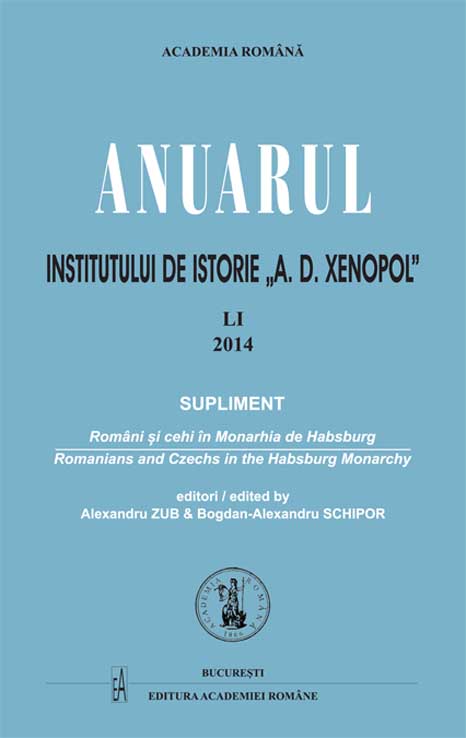WARUM IST DAS HABSBURGERREICH ZERFALLEN: VON PRAG AUSGESEHEN
WHY THE HABSBURG EMPIRE FELL APART: PRAGUE’S PERSPECTIVES
Author(s): Milan HlavačkaSubject(s): History
Published by: Editura Academiei Române
Keywords: dualist monarchy; Czech nation; federalist orientation; liberal orientation; nationalism;autonomy;
Summary/Abstract: The complex process that led to the separation of the dual monarchy, with its collapse and the emergence of the Czechoslovak Republic is analyzed from several perspectives. A first point of view reveals the strong demographic development of the Czech nation, which at the census of 1910 got to over 6 million people, scattered across Bohemia, Moravia and Silesia. The demographic progress has been reinforced by an unprecedented economic and cultural development, all showing signs of total emancipation. The analysis of the Czech policy guidelines points out that since the 60s of the 19th century, the Czechs have embraced two contrary orientations of constitutional law. The first was the conservative, federalist orientation, represented by the “elder Czechs”, dominated by the ideology of bohemian state’s rights who, from the so-called fundamental article in 1871, aimed to expand the national territorial autonomy, respectively the political hegemony of the Czechs upon on all the regions of the Bohemian Kingdom, including those inhabited by Germans. The other orientation, a liberal one, visible especially from the late 19th century, of the “young Czechs”, headed by their chief Karel Kramar, although advocating the preservation of the integrity of Cisleithania, militated for a program of nationalized public law extended not only over Bohemia but also over Moravia and Silesia, meant to prepare for the eventuality of a national state perspective, along with Austria or even without it. On the other hand, the Czechs’ relations with Austria were more negative than positive due to political developments after 1848. In the matter of foreign policy, where the “elder Czechs” followers were adepts of the “Austrian Slavism” promoted by Fr. Palacky, subsequently the “young Czechs” have shown their opposition to the approach towards Austria-Hungary and Germany, declaring their sympathy for Russia and Pan-Slavism. The self-administration successfully promoted at communal and district level in Bohemia offered strong support to the ritualized nationalism, contributing to the awakening of and spreading the idea of state autonomy. To this was added the fact that after the change of the century, in early 20th century, while promoting self-administration we are witnessing a process exacerbated by nationalization of bureaucracy, so that World War I emerged as the catalyst that led to the collapse of the Habsburg Monarchy and to the proclamation of an independent Czechoslovak state.
Journal: Anuarul Institutului de Istorie »A.D. Xenopol« - Iaşi
- Issue Year: LI/2014
- Issue No: Supl. 3
- Page Range: 69-80
- Page Count: 12
- Language: German

